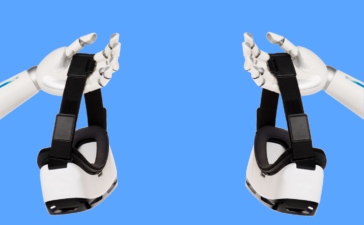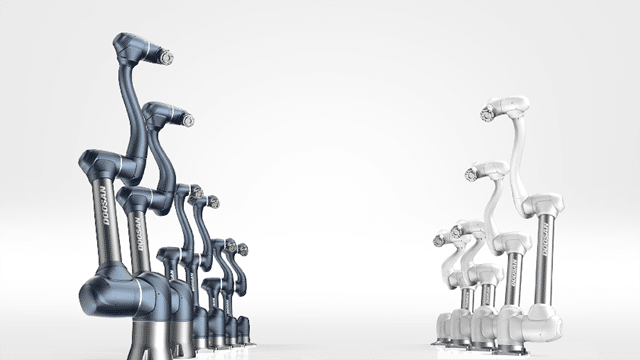VR Robots: Enhancing Robot Functions With VR Technology
VR robots are slowly moving into the mainstream with applications that go beyond the usual manufacturing processes. Robots have been in use for years in industrial settings where they perform automated repetitive tasks. But their practical use has been quite limited. Today, however, we see some of them in the consumer sector delivering robotic solutions that require customization.
Augmented by other technologies such as AR, VR, and AI, robots show improved efficiency and safety in accomplishing more complex processes. With VR, humans can supervise the robots remotely to enhance their performance. VR technology provides human operators with a more immersive environment. This enables them to interact with robots better and view the actual surroundings of the robots in real time. Consequently, this opens vast opportunities for practical uses that enhance our lives.
Real-Life Use Cases of VR Robots
1. TX SCARA: Automated Restocking of Refrigerated Shelves
Developed by Telexistence, TX SCARA is powered by three main technologies—robotics, artificial intelligence, and virtual reality. This robot specializes in restocking refrigerated shelves in stores. It relies on GORDON, its AI system, to know when and where to place products. When issues arise due to external factors or system miscalculation, Telexistence employees use VR headsets to control the robot remotely and address the problem.
TX SCARA is present in 300 FamilyMart stores in Japan. Plans to expand their use in convenience stores in the United States are already underway. With TX SCARA capable of working 24/7 with a pace of up to 1,000 bottles or cans per day, it can replace up to three hours of human work each day for a single store alone.
2. Reachy: A Robot That Shows Emotions
Reachy gives VR robots a human side. An expressive humanoid platform, Reachy mimics human expressions and body language. It conveys human emotions through its antennas and motions.

Users operate Reachy remotely using VR equipment that shows the environment surrounding the robot. They can move Reachy’s head, arms, and hands to manipulate objects and interact with people around the robot. They can also control Reachy’s mobile base to move around and explore its environment.
Since it can be programmed with Python and ROS to perform almost any task, its use cases are virtually limitless. It has applications across various sectors, such as research (to explore new frontiers in robotics), healthcare (to replace mechanical tasks), retail (to enhance customer experiences), education (to make learning more immersive), and many others. Reachy is also fully customizable, with many different configurations, modules, and hardware options available.
3. Robotic VR: Haptic Technology for Medical Care
A team of researchers co-led by the City University of Hong Kong has developed an advanced robotic VR system that has great potential for use in healthcare. Robotic VR, an innovative human-machine interface (HMI), can be used to perform medical procedures. This includes conducting swab tests and caring for patients with infectious diseases.
Doctors, nurses, and other health practitioners control the VR robot using a VR headset and flexible electronic skin that enables them to experience tactile sensations while interacting remotely with patients. This allows them to control and adjust the robot’s motion and strength as they collect bio-samples or provide nursing care. Robotic VR can help minimize the risk of infection and prevent contagion.
4. Skippy: Your Neighborhood Delivery Robot
Skippy elevates deliveries to a whole new level. Human operators, called Skipsters, control these VR robots remotely. They use VR headsets to supervise the robots as they move about the neighborhood. When you order food or groceries from a partner establishment, Skippy picks it up and delivers it to your doorstep. Powered by AI and controlled by Skipsters, the cute robot rolls through pedestrian paths while avoiding foot traffic and obstacles.

You can now have Skippy deliver your food orders from a handful of restaurants in Minneapolis and Jacksonville. With its maker, Carbon Origins, planning to expand the fleet this year, it won’t be long until you spot a Skippy around your city.
Watch Out for More VR-Enabled Robots
Virtual reality is an enabling technology in robotics. By merging these two technologies, we’re bound to see more practical uses of VR-enabled robots in the consumer market. As the technologies become more advanced and the hardware required becomes more affordable, we can expect to see more VR robots that we can interact with as we go through our daily lives.
Developments in VR interface and robotics technology will eventually pave the way for advancements in the usability of VR robots in real-world applications.
VR Robots: Enhancing Robot Functions With VR Technology Read More »


